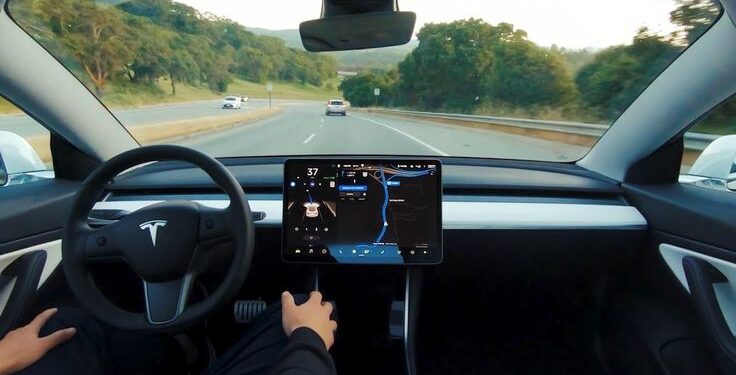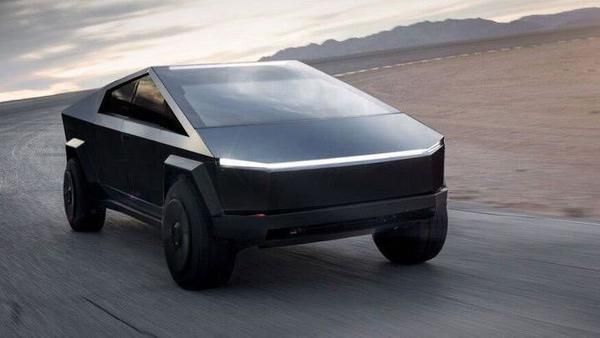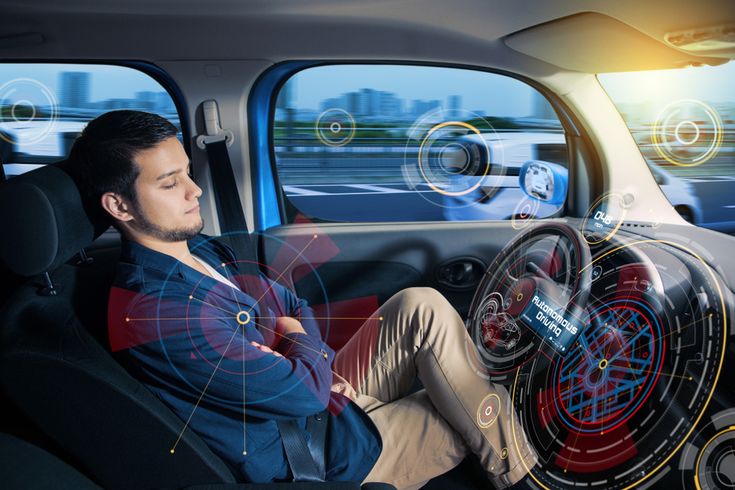Tesla has long been at the forefront of automotive innovation, consistently pushing the boundaries of what is possible in electric and autonomous vehicle technology. With the recent announcement of its Full Self-Driving (FSD) system, Tesla is once again challenging the conventional norms of transportation and promising to revolutionize the way we commute. This breakthrough not only signifies a pivotal moment for the company but also marks a transformative shift in the global automotive landscape. In this article, we will delve into Tesla’s journey towards autonomous driving, explore the intricate technologies that power its FSD system, discuss safety and regulatory challenges, compare Tesla’s approach with industry competitors, and examine the far-reaching implications for the automotive world and society at large.
Tesla’s Evolution in Autonomous Driving
Tesla’s commitment to innovation is evident in its progressive approach to self-driving technology. Over the past decade, the company has evolved from offering basic driver-assistance features to pioneering a fully autonomous driving system. This journey is characterized by continuous improvements, rigorous data collection, and relentless testing in real-world conditions.
A. The Early Days of Autopilot
Tesla’s introduction of Autopilot marked the beginning of a new era in automotive safety and convenience. Initially designed as an advanced driver-assistance system (ADAS), Autopilot provided features such as adaptive cruise control and lane-keeping assistance. These early functionalities laid the groundwork for more ambitious projects.
B. Advancements Through Over-the-Air Updates
One of Tesla’s most distinctive advantages is its ability to deploy software updates over the air. This capability has allowed the company to refine its self-driving algorithms continuously and address issues without requiring physical modifications to the vehicles. Over time, these updates have introduced new features and enhanced the overall performance of Tesla’s driver-assistance systems.
C. Introduction of FSD Beta
Before the full-scale rollout, Tesla introduced a beta version of its Full Self-Driving software to a limited group of users. This phase was critical for gathering data, identifying potential issues, and iterating on the technology. The feedback from early adopters played a crucial role in shaping the final product, ensuring that the system is robust enough to handle a variety of driving scenarios.
What is Full Self-Driving?
Full Self-Driving (FSD) is not just an incremental improvement; it represents a paradigm shift in how vehicles operate. Unlike conventional driver-assistance systems, FSD aims to enable a car to navigate and operate autonomously with minimal human intervention. Here’s an in-depth look at what FSD entails:
A. Core Components of FSD
Tesla’s FSD system is a complex interplay of hardware and software designed to mimic human driving capabilities. The key components include:
- Sensors and Cameras: Tesla vehicles are equipped with an array of high-resolution cameras, ultrasonic sensors, and, in some models, radar systems. These sensors continuously monitor the vehicle’s surroundings, providing real-time data that is crucial for navigation and obstacle detection.
- Neural Networks and AI: At the heart of FSD lies advanced artificial intelligence. Tesla’s neural networks process the vast amounts of data collected by the sensors, enabling the system to recognize objects, interpret road signs, and predict the behavior of other road users.
- Computing Hardware: Tesla has developed proprietary hardware, such as the Full Self-Driving Computer, which is optimized for processing complex neural network computations quickly and efficiently. This hardware is essential for running the sophisticated algorithms that power autonomous driving.
- Over-the-Air Software Updates: Regular software updates ensure that the FSD system evolves and improves over time, incorporating the latest advancements in machine learning and sensor technology.
B. Functionalities of FSD
Tesla’s FSD system is designed to handle a wide range of driving tasks. Some of the primary functionalities include:
A. Navigate on Autopilot: This feature enables the vehicle to take over highway driving, including merging, lane changes, and exit maneuvers.
B. Auto Lane Change: The system can automatically change lanes when it determines that it is safe to do so, reducing the need for driver intervention.
C. Autopark: Tesla’s vehicles can park themselves in parallel or perpendicular spaces, easing the challenge of parking in tight spots.
D. Summon and Smart Summon: These features allow the vehicle to navigate complex parking environments and come to the driver’s location autonomously.
E. Traffic Light and Stop Sign Control: The system can identify traffic signals and stop signs, adjusting the vehicle’s speed accordingly to ensure compliance with traffic laws.
F. City Street Navigation: In more advanced versions, FSD is capable of navigating urban environments, handling intersections, roundabouts, and pedestrian crossings.
The Technology Behind Tesla’s FSD
Tesla’s Full Self-Driving system is a marvel of modern engineering, combining state-of-the-art hardware with cutting-edge software. Understanding the technology behind FSD provides insights into how Tesla is able to push the limits of autonomous driving.
A. Sensor Fusion and Data Collection
Tesla relies on a process known as sensor fusion to integrate data from multiple sources into a coherent picture of the surrounding environment. This involves:
A. Visual Data Integration: High-definition cameras capture continuous video feeds that are analyzed in real time to detect road features, traffic signals, and obstacles.
B. Ultrasonic and Radar Data: These sensors provide additional information about the proximity of nearby objects, especially in conditions where visual clarity may be compromised, such as in fog or heavy rain.
C. GPS and Mapping Data: Tesla vehicles use GPS data in conjunction with detailed maps to understand their precise location and plan optimal routes.
B. Advanced Neural Networks and Machine Learning
The processing of sensor data is managed by sophisticated neural networks that have been trained on millions of miles of driving data. Key aspects include:
A. Deep Learning Algorithms: These algorithms enable the system to identify patterns and make decisions based on historical and real-time data.
B. Continuous Learning: Tesla’s FSD system is designed to learn continuously from each driving experience, improving its decision-making processes over time.
C. Simulation and Virtual Testing: Extensive simulations allow Tesla to test various driving scenarios in a controlled environment, ensuring the FSD system can handle unexpected situations.
C. Hardware Innovations
Tesla’s hardware is specifically engineered to support the demands of autonomous driving. Notable innovations include:
A. Full Self-Driving Computer: This custom-designed computer is optimized for speed and efficiency, capable of processing the large amounts of data required for real-time decision-making.
B. Redundancy and Safety Systems: Multiple layers of redundancy ensure that even if one component fails, the system can continue to operate safely.
C. Energy Efficiency: The hardware is designed to minimize energy consumption, ensuring that the autonomous features do not significantly impact the vehicle’s overall range.
Safety and Regulatory Considerations
With great technological advancements come significant responsibilities. The deployment of Full Self-Driving technology raises important questions about safety, liability, and regulatory compliance.
A. Safety Mechanisms in FSD
Tesla has implemented multiple safety measures to ensure that its FSD system operates reliably. These include:
A. Real-Time Monitoring: The system continuously monitors the driving environment, adjusting its actions based on dynamic conditions.
B. Fallback Protocols: In the event of a system malfunction, Tesla vehicles are programmed to alert the driver and, if necessary, safely bring the car to a stop.
C. Driver Supervision: Despite its advanced capabilities, Tesla emphasizes that drivers must remain attentive and ready to take control at any time during autonomous operation.
B. Regulatory Challenges
The journey toward fully autonomous vehicles is fraught with regulatory hurdles. Key challenges include:
A. Legislation Variability: Different regions have varying regulations regarding autonomous driving, which can complicate a global rollout.
B. Safety Standards: Governments and regulatory bodies are continually updating safety standards, requiring Tesla to maintain compliance through rigorous testing and documentation.
C. Liability Issues: Determining liability in the event of an accident involving an autonomous vehicle remains a complex legal challenge, with ongoing debates about the responsibilities of manufacturers versus drivers.
C. Public Perception and Trust
Building trust in autonomous technology is essential for widespread adoption. Tesla is actively working to address concerns through:
A. Transparency: Providing detailed insights into the technology and safety measures helps alleviate public concerns.
B. Engagement: Tesla engages with regulatory bodies, industry experts, and the public to discuss the benefits and challenges of FSD.
C. Proven Track Record: By showcasing real-world data and successful deployments, Tesla aims to build confidence in its autonomous systems.
Competitor Landscape and Industry Comparisons
While Tesla has been a pioneer in autonomous driving, it is not alone in the race to develop self-driving vehicles. Several companies are making significant strides in this domain, each with its unique approach and technological innovations.
A. Waymo and the Alphabet Connection
Waymo, a subsidiary of Alphabet Inc., is one of the most well-known competitors in the self-driving space. Their technology focuses heavily on LiDAR systems combined with high-definition mapping, which contrasts with Tesla’s camera-based approach. Key points include:
A. Extensive Testing: Waymo’s vehicles have logged millions of autonomous miles in various conditions, establishing a strong safety record.
B. Service Model: Waymo has begun deploying autonomous taxi services in select cities, providing a glimpse into the future of urban mobility.
C. Conservative Deployment: Waymo’s approach is methodical, emphasizing safety and regulatory compliance over rapid expansion.
B. Cruise and the Autonomous Urban Experience
Cruise, backed by General Motors, is another major player in the autonomous vehicle market. Cruise focuses on urban environments, aiming to provide fully autonomous ride-hailing services. Their strategy includes:
A. Urban Focus: Cruise designs its technology specifically for the complex, dynamic conditions of city driving.
B. Partnerships: Collaborations with established automotive manufacturers allow Cruise to leverage existing infrastructure and expertise.
C. Safety Protocols: Like Tesla, Cruise places a strong emphasis on safety, integrating multiple layers of redundancy and real-time monitoring.
C. Other Emerging Players
Numerous startups and tech giants are investing in autonomous driving research. While these companies may not yet have the scale of Tesla, Waymo, or Cruise, they contribute to a rapidly evolving competitive landscape with innovative ideas and approaches.
The Economic and Social Impact of Autonomous Vehicles
The advent of full self-driving technology is poised to have profound economic and social implications. As autonomous vehicles become more prevalent, they could reshape industries and alter everyday life in several key ways.
A. Transformation of Transportation and Mobility
Autonomous driving technology promises to revolutionize the transportation sector by:
A. Reducing Traffic Accidents: With advanced sensors and AI-driven decision-making, autonomous vehicles have the potential to reduce human errors and decrease accident rates significantly.
B. Enhancing Mobility: Self-driving cars can provide greater mobility for the elderly, disabled, and those without access to traditional transportation.
C. Optimizing Traffic Flow: Autonomous vehicles can communicate with each other and with traffic management systems, leading to more efficient use of road networks and reduced congestion.
B. Implications for the Automotive Industry
The widespread adoption of self-driving technology could result in several transformative changes for the automotive industry:
A. Shift in Consumer Behavior: As vehicles become more autonomous, the role of the driver may change from active participant to overseer, altering consumer expectations and vehicle design.
B. New Business Models: The rise of autonomous ride-sharing services could disrupt traditional car ownership models, leading to a shift towards mobility-as-a-service (MaaS) solutions.
C. Supply Chain and Manufacturing: Increased reliance on software and advanced hardware may drive new partnerships and supply chain innovations, affecting manufacturing processes and workforce requirements.
C. Broader Societal Changes
Beyond the automotive sector, full self-driving technology may trigger broader societal changes:
A. Urban Planning and Infrastructure: With reduced demand for parking and more efficient traffic management, cities could reimagine urban spaces, transforming infrastructure and public spaces.
B. Environmental Impact: Autonomous vehicles, particularly when combined with electric powertrains, can contribute to reduced carbon emissions and a cleaner environment.
C. Legal and Ethical Considerations: The evolution of self-driving technology will necessitate new legal frameworks and ethical guidelines, addressing issues such as data privacy, decision-making in critical situations, and liability in accidents.
Technological Challenges and Future Prospects
While Tesla’s FSD system represents a monumental leap forward, it is not without its challenges. Understanding these challenges is crucial for anticipating the future trajectory of autonomous driving.
A. Overcoming Technological Limitations
Tesla’s reliance on a camera-based approach, while innovative, presents unique challenges compared to systems that incorporate LiDAR or other sensor technologies:
A. Environmental Variability: Cameras may struggle in extreme weather conditions or low-light situations, necessitating continuous improvements in image processing and sensor fusion techniques.
B. Complex Urban Environments: Navigating densely populated urban areas with unpredictable human behavior requires highly sophisticated algorithms and extensive real-world data.
C. Edge Cases: Rare or unusual driving scenarios, often referred to as edge cases, continue to test the limits of current AI systems. Tesla’s iterative approach aims to address these through ongoing software refinements and data collection.
B. Regulatory and Legal Hurdles
The journey to full autonomy is as much about regulatory approval as it is about technological prowess. Key regulatory challenges include:
A. Standardization: Establishing uniform safety and operational standards across different regions remains a significant hurdle.
B. Government Oversight: Continuous dialogue with regulatory bodies is essential to ensure that autonomous vehicles meet all legal requirements and public safety standards.
C. Liability Frameworks: The development of clear liability frameworks is necessary to address accidents or system failures involving autonomous vehicles.
C. Future Innovations and Roadmap
Tesla’s vision for the future extends well beyond the current capabilities of FSD. Some potential future innovations include:
A. Enhanced Sensor Technologies: As sensor technology evolves, Tesla may integrate new types of sensors or improve existing ones to better handle adverse conditions.
B. Improved Neural Networks: Advances in artificial intelligence and machine learning will likely lead to even more refined decision-making processes and enhanced safety features.
C. Integration with Smart Infrastructure: The next phase of autonomous driving could see Tesla vehicles interacting with smart city infrastructure, enabling real-time data exchange to optimize traffic flow and improve safety.
D. Global Expansion: As regulatory frameworks adapt and consumer acceptance grows, Tesla plans to expand its autonomous driving capabilities to markets around the world, paving the way for a truly global network of self-driving vehicles.
The Road Ahead: Societal Transformation Through Autonomous Driving
The implementation of Full Self-Driving technology has the potential to redefine not only transportation but also many aspects of daily life. As vehicles transition from being mere modes of transportation to intelligent, autonomous agents, society will need to adapt to a new paradigm.
A. Changing the Nature of Commutes
Autonomous vehicles could revolutionize daily commutes by:
A. Enhancing Productivity: With the burden of driving removed, passengers can utilize travel time for work, leisure, or rest, fundamentally changing the concept of commuting.
B. Improving Accessibility: Full self-driving technology can provide increased mobility for those who are unable to drive, such as the elderly or disabled.
C. Reducing Stress: Eliminating the need for constant attention during commutes may lead to reduced stress levels and improved overall well-being for drivers.
B. Economic Shifts and Job Market Dynamics
The shift toward autonomous driving will likely have significant economic implications:
A. Job Displacement and Creation: While traditional driving jobs may decline, new opportunities in technology, vehicle maintenance, data analysis, and software development are expected to emerge.
B. Insurance and Liability: The insurance industry will need to adjust to new risk models, with liability shifting from the driver to the technology provider in many cases.
C. Urban Economic Revitalization: Reduced need for parking infrastructure and more efficient transportation systems may lead to the repurposing of urban spaces, spurring economic growth in previously underutilized areas.
C. Environmental and Energy Considerations
Autonomous driving, when combined with electric powertrains, holds promise for environmental sustainability:
A. Emission Reductions: With more efficient driving patterns and reduced congestion, autonomous vehicles can help lower overall carbon emissions.
B. Energy Optimization: Smart integration with renewable energy sources and grid management systems may lead to more sustainable urban transportation ecosystems.
C. Reduced Resource Consumption: Autonomous vehicle fleets can be optimized for energy efficiency, reducing the overall consumption of resources compared to traditional transportation models.
Conclusion
Tesla’s announcement of Full Self-Driving capabilities represents a landmark moment in the evolution of transportation technology. By merging advanced hardware with sophisticated artificial intelligence, Tesla is not only redefining what is possible on the road today but is also laying the foundation for a future where autonomous vehicles become a commonplace reality. The journey towards full autonomy involves overcoming significant technological challenges, navigating complex regulatory landscapes, and addressing broader societal impacts. However, the potential benefits—increased safety, enhanced productivity, reduced environmental impact, and improved mobility—make this an endeavor worth pursuing.
As Tesla continues to refine its FSD system and expand its capabilities, the automotive industry, regulators, and society as a whole will need to adapt to this rapidly changing landscape. The promise of full self-driving technology is immense, offering a future where the way we travel is safer, more efficient, and more accessible to everyone. While challenges remain, Tesla’s relentless pursuit of innovation signals a bold step towards realizing a world where autonomous driving is not just a futuristic concept, but a tangible reality that transforms our daily lives.







